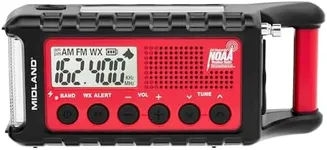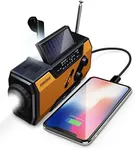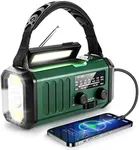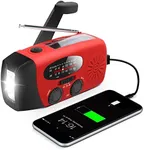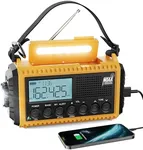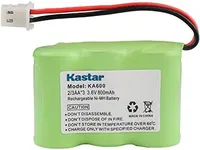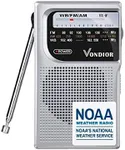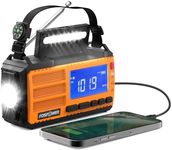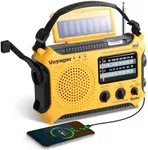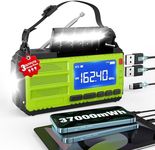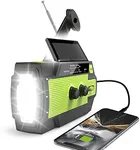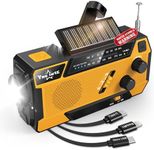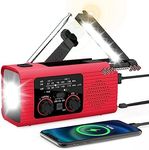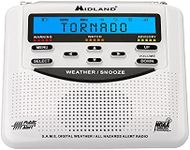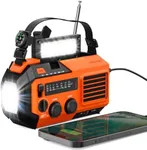We Use CookiesWe use cookies to enhance the security, performance,
functionality and for analytical and promotional activities. By continuing to browse this site you
are agreeing to our privacy policy
10 Best Emergency Radios 2025 in the United States
From leading brands and best sellers available on the web.How do we rank products for you?
Our technology thoroughly searches through the online shopping world, reviewing hundreds of sites. We then process and analyze this information, updating in real-time to bring you the latest top-rated products. This way, you always get the best and most current options available.

Buying Guide for the Best Emergency Radios
Choosing the right emergency radio is crucial for ensuring you have access to important information during emergencies. An emergency radio can keep you informed about weather updates, news, and other critical information when other communication methods fail. To pick the best emergency radio for your needs, consider the following key specifications and understand how they impact the radio's performance and usability.Power SourceThe power source of an emergency radio is important because it determines how you can keep the radio running during an emergency. Common power sources include batteries, hand cranks, solar panels, and USB charging. Battery-powered radios are convenient but require a supply of fresh batteries. Hand crank and solar-powered radios are more sustainable options as they can be recharged without external power. USB charging is useful if you have access to a power bank. Choose a radio with multiple power sources to ensure you have backup options.
Weather AlertsWeather alerts are crucial for staying informed about severe weather conditions. Look for radios that can receive NOAA (National Oceanic and Atmospheric Administration) weather alerts, which provide real-time updates on weather emergencies. Some radios have automatic alert features that turn on the radio when a weather alert is broadcasted. This feature is particularly useful if you need to be alerted immediately without constantly monitoring the radio.
Frequency BandsFrequency bands determine the range of stations your radio can receive. AM and FM bands are standard for receiving local news and entertainment. Shortwave bands can pick up international broadcasts, which can be useful in widespread emergencies. NOAA weather bands are essential for receiving weather alerts. Choose a radio with multiple frequency bands to ensure you have access to a wide range of information sources.
DurabilityDurability is important because your emergency radio needs to withstand harsh conditions. Look for radios that are water-resistant or waterproof, shockproof, and made from sturdy materials. These features ensure that the radio will continue to function even if it gets wet or is dropped. Consider your environment and the types of emergencies you might face when evaluating the durability of a radio.
PortabilityPortability is a key factor if you need to carry the radio with you. A compact and lightweight radio is easier to transport, especially if you need to evacuate quickly. Some radios come with carrying handles or straps for added convenience. Consider how you plan to use the radio and whether you need a model that is easy to carry around.
Additional FeaturesAdditional features can enhance the functionality of your emergency radio. Some radios come with built-in flashlights, sirens, or USB ports for charging other devices. These features can be very useful in an emergency situation. Think about what additional tools you might need and choose a radio that includes those features.
FAQ
Most Popular Categories Right Now


